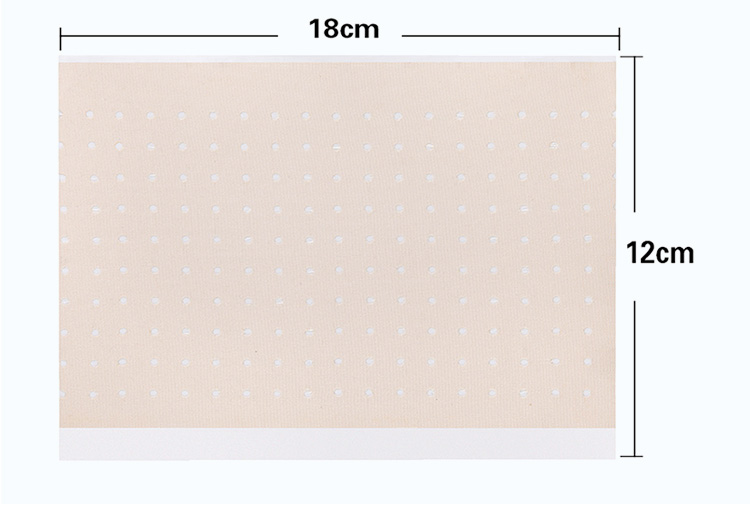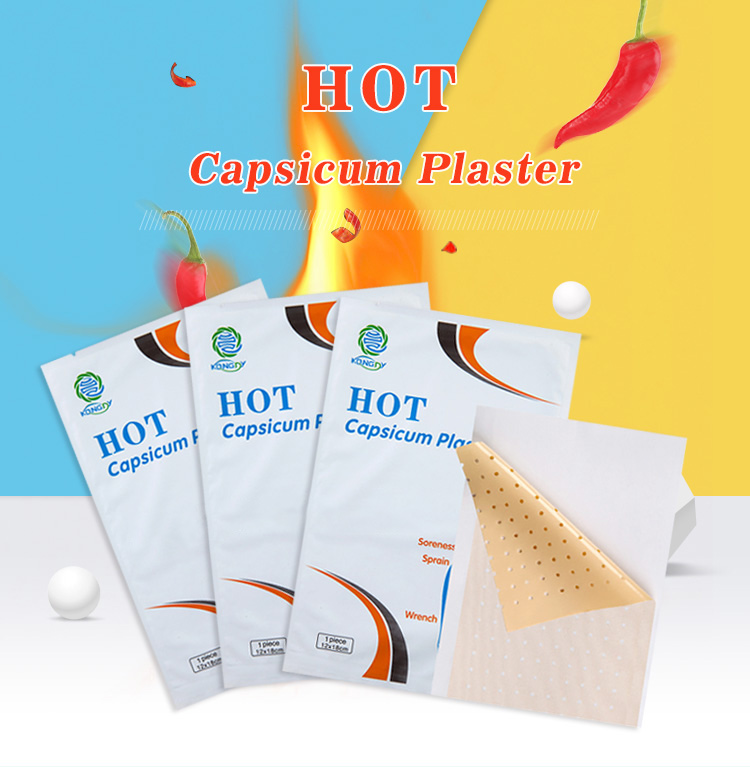Is Pricing the Most Important Factor When Choosing an OEM?
When selecting an Original Equipment Manufacturer (OEM) for your Hot Capsicum Plasters, pricing is certainly a critical consideration. However, focusing solely on cost can lead to potential pitfalls that could undermine the quality, reliability, and long-term success of your product line. While cost-effectiveness is important, a comprehensive evaluation of other key factors—such as product quality, manufacturing capabilities, lead times, and the OEM's ability to innovate—is crucial when making an informed decision.
In this article, we’ll dive deep into the factors that should influence your choice of a Hot Capsicum Plaster OEM, explaining why pricing should not be the only factor, and how other aspects can significantly impact your business's success.

1. Quality of Products
While price is often the first metric businesses look at, the quality of the product is arguably more important. High-quality Hot Capsicum Plasters are critical for customer satisfaction, brand reputation, and regulatory compliance. An OEM that offers rock-bottom prices might compromise on the quality of ingredients or production processes.
Raw Material Sourcing: The effectiveness of Custom Hot Capsicum Plasters largely depends on the quality of ingredients such as capsicum extract and adhesives. A Hot Capsicum Plaster Manufacturer that prioritizes price may cut costs by sourcing lower-quality or inconsistent raw materials. This could affect the efficacy of your product, leading to customer dissatisfaction or even product recalls.
Quality Control Standards: Choosing an OEM that implements rigorous quality control measures ensures that each Private Label Hot Capsicum Plaster meets high standards. Poor-quality control can result in defects, product failures, or health risks, all of which could damage your brand’s reputation.
Certifications: OEMs with certifications such as Good Manufacturing Practice (GMP) ensure that their production processes meet stringent industry standards. While certified Hot Capsicum Plaster Suppliers might come with higher costs, the assurance of quality often outweighs price considerations in the long run.
2. Manufacturing Capabilities and Capacity
The ability of a Hot Capsicum Plaster OEM to meet your specific production needs is another essential consideration. While pricing is important, ensuring that your OEM has the capacity to deliver on time and scale production as needed can greatly influence your business’s growth and flexibility.
Volume and Scalability: If your OEM cannot meet your growing demand due to limited production capacity, you might find yourself facing stockouts or delayed deliveries. This can negatively impact customer satisfaction and cause a loss of sales. Before making a decision, ensure that the OEM can handle your current and future order volumes.
Customization Flexibility: For businesses looking to create a Custom Hot Capsicum Plaster to stand out in the market, flexibility in formulation and packaging is key. Some Hot Capsicum Plaster Manufacturers may offer low-cost production but lack the ability to customize products to your exact specifications. Ensure that the OEM can accommodate the level of customization you require, even if it means paying a higher price.
Technology and Innovation: Some OEMs invest in advanced technology, automation, and R&D, which allows for more efficient production and innovation. An OEM that can innovate and offer cutting-edge production techniques may be a better partner in the long run, even if their pricing is higher.
3. Reliability and Lead Times
The reliability of your Hot Capsicum Plaster Supplier is just as important as pricing. A low-cost OEM may struggle to deliver products on time, leading to disruptions in your supply chain and lost revenue. Consistency in meeting delivery deadlines is crucial for maintaining smooth business operations.
On-Time Delivery: Evaluate the OEM's track record for meeting deadlines. Late deliveries can result in stock shortages, delayed product launches, or even lost customers. While an OEM might offer a low price, frequent delays can cost you far more in the long run.
Supply Chain Stability: OEMs with robust supply chains can better manage disruptions in raw material sourcing, reducing the likelihood of delays. In contrast, a lower-cost Hot Capsicum Plaster OEM might cut corners by relying on unreliable suppliers, which could lead to shortages or delays.
Inventory Management: Some OEMs offer inventory management services, allowing you to maintain stock levels without overcommitting to large production runs. This is particularly useful for Private Label Hot Capsicum Plaster businesses, where maintaining just-in-time inventory can help reduce costs while ensuring product availability.
4. Regulatory Compliance
Compliance with health and safety regulations is essential, especially for products like Hot Capsicum Plasters, which fall under the category of medical devices or health products. Skipping on regulatory compliance to reduce costs can result in severe legal consequences and damage to your brand's reputation.
Local and International Regulations: Ensure that your Hot Capsicum Plaster Manufacturer adheres to all relevant regulations in the countries where you plan to sell your products. Regulatory compliance can include safety standards, labeling requirements, and specific restrictions on ingredients.
Certifications and Audits: A reliable OEM should be open to regular audits and able to provide certifications that demonstrate compliance with regulatory standards. Cutting costs by selecting an OEM that lacks these assurances may put your business at risk of product recalls or legal penalties.
5. Communication and Support
Clear and consistent communication between your business and your OEM is vital for maintaining a successful partnership. Even if an OEM offers competitive pricing, poor communication can lead to misunderstandings, production errors, and delays.
Account Management: A responsive account manager who understands your business needs can help facilitate smoother production processes. Low-cost OEMs might lack dedicated account managers, making it difficult to resolve issues promptly.
Problem-Solving: When issues arise during production, having an OEM that is quick to communicate and resolve problems can save you time and money. Poor customer service from a low-cost OEM could mean extended delays or production halts.
Long-Term Partnership: Consider whether the OEM is interested in forming a long-term partnership or if they are primarily focused on short-term profits. A Hot Capsicum Plaster OEM that values long-term collaboration will be more willing to invest in understanding your brand and evolving with your business needs.
6. Price vs. Total Cost of Ownership (TCO)
While initial pricing is important, the Total Cost of Ownership (TCO) gives a more accurate picture of the overall cost associated with an OEM. TCO includes not only the price per unit but also the hidden costs of poor quality, delayed deliveries, and operational inefficiencies.
Hidden Costs: Low pricing might be attractive at first, but if it results in quality control issues, delayed shipments, or regulatory fines, the hidden costs can add up quickly. Always factor in these potential costs when comparing OEMs.
Long-Term Value: A slightly more expensive Hot Capsicum Plaster Supplier that offers better quality, reliable deliveries, and superior customer service can provide more value over time. Consider whether the OEM's pricing reflects long-term benefits or if it simply represents short-term savings.
Conclusion
While pricing is an important factor when choosing a Hot Capsicum Plaster OEM, it should not be the sole consideration. Quality, reliability, regulatory compliance, customization capabilities, and long-term support are all equally critical in selecting the right OEM partner. A comprehensive evaluation of these factors will help you avoid the pitfalls of focusing only on price and ensure a successful partnership that benefits your business in the long run.
Choosing a low-cost Hot Capsicum Plaster Manufacturer may seem like a good way to reduce expenses, but cutting corners on quality, communication, or delivery can end up costing you more in the long term. It’s important to strike the right balance between price and the overall value an OEM can bring to your business.
Related Questions and Answers
Is a low-cost OEM always the best choice?
- Not necessarily. While lower costs may seem attractive, they can come with hidden expenses like poor product quality, delayed deliveries, and regulatory issues.
What should I prioritize besides pricing when choosing an OEM?
- Consider factors like product quality, regulatory compliance, production capacity, lead times, and communication.
Can a low-cost OEM still offer good quality Hot Capsicum Plasters?
- Some low-cost OEMs may offer decent quality, but it’s important to thoroughly vet their processes, certifications, and quality control measures before making a decision.
What is Total Cost of Ownership (TCO) in OEM selection?
- TCO includes not just the price per unit but also hidden costs like delays, quality issues, and additional operational costs.
How can communication impact OEM partnerships?
- Clear communication helps avoid misunderstandings and ensures smoother production processes. Poor communication from the OEM can lead to delays and errors in production.






